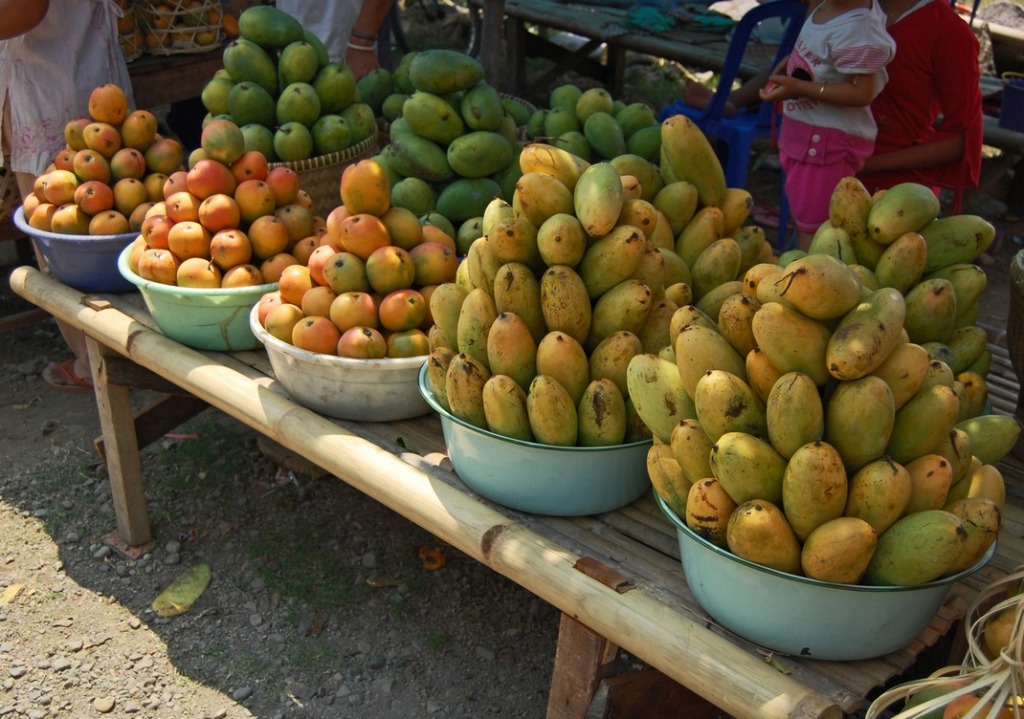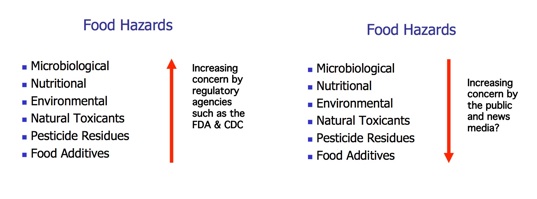
Photo information: Mangga aneka by W.A. Djatmiko (CC BY-SA)
We had a guest lecturer the other week who came in to talk to us about food irradiation, a topic that I honestly had never really heard of.
Basically, food irradiation is when food is exposed to low levels of radioactive energy in order to kill pathogens. It does not make the food itself radioactive and is generally thought to be safe by the scientific community.
Our guest speaker and my professor were both highly in support of food irradiation, which they believe would save lives if it was widely adopted. However, they said that is not likely to happen in this country (with a few exceptions, like the mangos above) because people are so frightened by the idea of irradiating their food.
Personally, I’m not sure how I feel about food irradiation – our professors provided strong data showing that it is safe but because I know so little about it, I would like to learn more before making up my mind.
However, the topic got me thinking about two things: perceived risk and food values.
Perceived risk
The topic of perceived risk was first introduced to me by a backpacking guide a few years ago. He had just pointed to the mountain (cliff, really) that we were going to climb next and I clearly looked skeptical.
He laughed and told me that there are many times in life where our perceived risk of a situation does not match the actual risk. Yes, it looked like there was a 200 foot vertical drop inches away from my boots but as long as we were careful, he assured me that the actual risk was very low. And he was right – we all made it to the top in one piece (despite one of us accidentally knocking a boulder off the trail, which narrowly missed hitting the boy in front of me). The view, by the way, was spectacular.
Compare that to driving a car. We do it every day and often without a second though, even though car accidents are frequent and can be deadly. We take stupid risks while driving too – racing other cars, texting, or even shaving our faces. The perceived risk may be low, but the actual risk is very real.

The same concept applies to food. Sometimes, our perceived risk doesn’t quite match up to the actual risk. In the example my professor gave above, we tend to worry a lot about food additives and not too much about microbiological contamination when in reality, food borne illness kills many more people than food additives (this is not to say I’m necessarily in support of food additives–that is another issue for another time).
Food values
There are various reasons why people choose to eat what they eat. Fear of food irradiation could definitely be one factor that would shape a person’s food choices. Others might be taste, cost, nutrition, availability, convenience, and ethics. We are all different and the factors that shape our food choices reflect this. Our food values can also change as our lives change – being diagnosed with diabetes or moving out of the dorms and having to cook for ourselves could radically shift the way we eat.
I’ve always been curious about the social aspect of food and why people eat what they eat, so I thought it would be fun to ask a couple of friends what their top food values are. I asked them list 3-5 main principles that guide the way they eat and although is in no way a representative sample or a good scientific survey, I found the results interesting.
Roommate:
- Not poison (except alcohol but that isn’t food)
- Yummy
- Vaguely local/seasonal/fresh
- Has ingredients that I know
Italian friend:
- I’ll put anything in my mouth as long as it tastes good but I have slightly more selective taste than most people.
- I like to make the most of what I eat. Whenever possible, I sit down and actually enjoy my food.
- A glass of wine or a beer with a meal is always nice.
- I try to avoid artificially flavored stuff. That sh*t tastes like chemicals. It’s gross.
Sister:
- Ethics
- Health
- Cost
- Taste
- Portability
Baseball friend (note: the quantities listed here are very specific to someone who is 6′ 7″ and a college athlete – definitely not general recommendations):
- 225 grams of protein a day
- 12 servings of fruit and vegetables a day
- Never go to bed hungry
- Lots of whole grains with dinner
Another roommate:
- Tastiness
- Ease of making
- Balanced nutrients
3 thoughts on “Irradiation, risk, and food values”